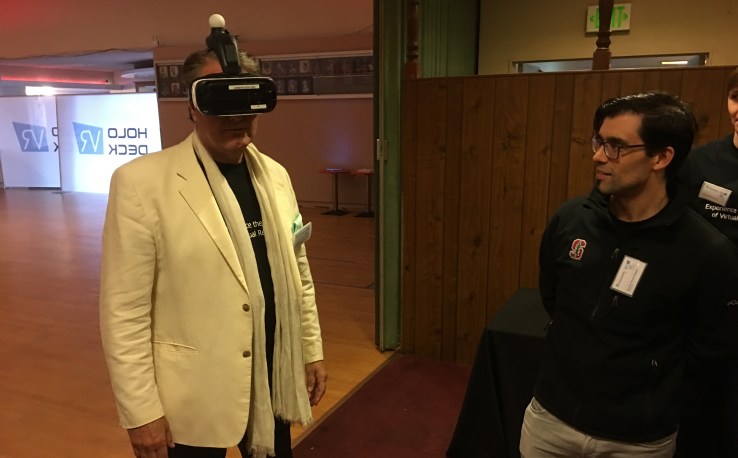HolodeckVR is turning location-based VR into a multi-user social adventure

Whether or not consumer VR becomes as widespread as many hope, there’s no denying that a lot of the current technology is a blast to try.
This thesis has birthed much of the excitement around bringing about an arcade renaissance for VR, but for interested startups perhaps the most ready opportunity is capturing the attention of amusement park-goers with attractive location-based multi-user VR experiences.
The Munich-based HolodeckVR has a pretty interesting proposition for these markets, utilizing their proprietary tech to blend radio frequency, IR tracking and on-device IMUs to bring multi-user positionally tracked VR to mobile headsets. This not only opens up the capabilities of cheaper hardware but makes it possible to distinguish multiple commercially available headsets from each other in a single space.
In other words, HolodeckVR is going to be able to cram a ton of people into dynamic VR experiences where they’ll be able to interact with each other in VR worlds in the same physical space. The tracking technology came out of Fraunhofer IIS, a German research institute, where the tracking technology has been in development for more than a decade. The team, composed of research scientists and serial entrepreneurs, also boasts Electronic Arts co-founder Jeff Burton as a co-founder.
I had a chance to run through a horror-themed demo of the startup’s tech. Ultimately, HolodeckVR is one part funhouse with physical obstacles and environmental features while also relying on software tricks to make you feel as though the experience is both much larger and much lengthier than you might think. They’re not really focusing on designing their own software experiences, as they obviously want to be more situated on the platform side while allowing parks to leverage IP or partnerships to capture the experiences they want.
The final product isn’t entirely flawless; something like the Gear VR wasn’t really designed to be used in room-scale experiences, but it succeeds in its mission of allowing multiple users to inhabit a single space while seeing each other in real time. As the team continues to raise funds, they’re working toward improving the technology so it will allow them to simultaneously place about 100 users inside a single tracked physical location.
VR startups like The Void (which Disney just announced will be setting up shop at their resorts) and Nomadic VR are raising cash to bring their particularly immersive experiences to dedicated spaces. Meanwhile, Six Flags has already funneled quite a bit of resources into a deal with Samsung that has brought Gear VR headsets to several of the amusement park company’s top roller coasters.
The startup isn’t looking to limit itself to the amusement park or arcade markets by any means and already has plenty of ideas for bringing their technologies to enterprise markets with use cases related to designing virtual showrooms and creating collaborative training environments inside the wild world of VR.